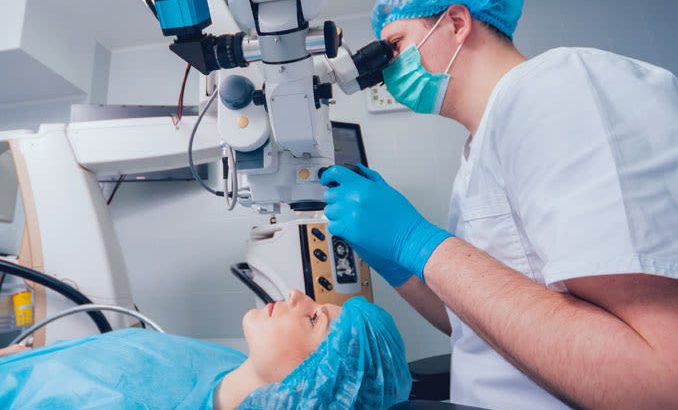Your surgeon uses an excimer laser to reshape the cornea during the PRK procedure, correcting refractive errors. After your surface cells (epithelium) are removed from the cornea, your surgeon uses the laser to reshape the cornea to alter your vision. Patients undergoing PRK refractive eye surgery have similar outcomes to those undergoing LASIK. The vast majority of PRK patients are able to wear no glasses or contact lenses.
In comparison to LASIK, the main disadvantage of PRK is that it does not correct every degree of nearsightedness, farsightedness, or astigmatism. There is also some potential discomfort following PRK. As a result of a PRK refractive eye surgery procedure, it can take a week for the surface cells of the cornea to grow back. It may take two to six weeks for the cornea to smooth enough to allow for clear vision. Maximum results may not be obtained for three months.
Patients undergoing PRK have the option of having both eyes treated on the same day. However, this will cost a week of missed work or inability to drive as your eyes heal. You can choose to have just one eye treated at a time so that you can return to work the next day using the other eye as a source of vision. If you choose to have only one eye done at a time, the second procedure will take place two weeks after the first.
The PRK procedure can help people with nearsightedness, or myopia, which normally has trouble seeing distant objects clearly. People with myopia can usually see close objects normally, but may experience blurry vision when trying to view distant objects. A person with hyperopia, or farsightedness, sees objects clearly from a distance, but is impaired when they are trying to focus on objects near to them or when they are trying to see objects that are distant.
A person with severe farsightedness may be impaired when they are trying to focus on distant objects. The same is true of astigmatism, which may produce difficulties seeing objects clearly at all distances. Individuals with astigmatism will have difficulty seeing objects clearly at all distances. In addition to comet-like flares around lights, patients with this condition may also experience headaches and eye strain. PRK corrects the shape of the cornea, which eliminates these symptoms.

